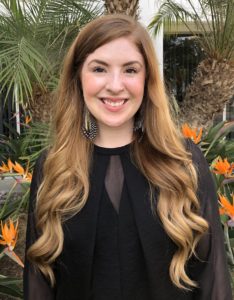
Opioid overdose has been an epidemic in the United States for a while. However, the amount of people who are misusing or abusing prescription drugs is increasing [1]. Substance misuse is when someone uses a prescription medication inappropriately.
For example, if someone takes a medication that wasn’t prescribed to them or takes more than what was advised. There is a common misunderstanding that taking prescription drugs rather than other kinds of drugs is somehow safer or healthier. However, this isn’t true [1].
What Different Types of Prescription Drugs Exist?
There are different types of prescription drugs, and each type comes with its own risk. The different types of prescription drugs that are commonly abused are stimulants, opioids, and depressants [1].
Stimulant drugs have side effects that are similar to the effects of drugs like cocaine [1]. Side effects can include paranoia, high blood pressure, and developing an irregular heartbeat.
Opioid medications impact the brain in the same way that heroin does [1]. These drugs can cause slowed breathing, drowsiness, and nausea [1].
Depressant medications can impact the brain in a similar way that alcohol does. Side effects of depressant medication misuse can include slurred speech, changes in breathing, exhaustion, and lack of coordination [1].
Individuals who regularly used these prescription medications can experience seizures if they stop using them and experience withdrawal [1].
Impact on Teens
 While these side effects are concerning for everyone, this increasing trend in prescription misuse and abuse is impacting teenagers the most [1]. Substance use during adolescence is especially risky because of its impact on a developing brain.
While these side effects are concerning for everyone, this increasing trend in prescription misuse and abuse is impacting teenagers the most [1]. Substance use during adolescence is especially risky because of its impact on a developing brain.
Our brains are not fully developed until our mid-twenties [1]. During adolescence, the parts of the brain that help us make logical decisions and control impulses are still developing [1]. This means that these are skills that teens are still developing.
Unfortunately, drug use can interrupt this process and can damage these parts of the brain [1]. Drug use during adolescence is also risky because it can make it more difficult for teens to practice good judgment or control impulses. This can place teens at an increased risk for dangerous behaviors such as driving while intoxicated or engaging in unsafe sex.
The Substance Abuse and Mental Health Administration has some suggestions on how to support America’s teenagers with this issue. Here they are:
- Providing Education: Research shows that about 25% of teenagers think that prescription drugs can help with studying [1]. Providing education about the real impact and risks associated with misusing these drugs can help teens make more informed choices.
- Safe Medication Storage: A main way teens are gaining access to these medications is through friends and family. This may be a matter of taking medications from someone’s medicine cabinet or teens sharing their own prescriptions. Safely storing these medications can reduce access to these drugs [1].
- Increased Monitoring: It would be helpful for doctors and pharmacists to monitor how often they are prescribing and dispensing these medications. There are prescription drug registries that pharmacists can check to see often someone is refilling prescriptions.
While these suggestions are good and necessary prevention strategies, another idea would be to examine what is motivating teens to start and continue using these substances. Substance abuse and addiction are not just about physical dependence [2].
These mental health conditions can often be traced back to emotional pain of some kind, whether it be anxiety, trauma, or depression [2]. Increasing teens’ access to mental health care is also important for getting to the root of the issue. Providing mental health care can help prevent or treat addiction.
Resources:
[1] Substance Abuse and Mental Health Services Administration. (2020, December 17). Rise in prescription drug misuse and abuse impacting teens. https://www.samhsa.gov/homelessness-programs-resources/hpr-resources/rise-prescription-drug-misuse-abuse-impacting-teens
[2] Maté, G. (2008). In the realm of hungry ghosts. North Atlantic Books.
About the Author:
 Samantha Bothwell, LMFT, is a licensed Marriage and Family Therapist, writer, explorer, and lipstick aficionado. She became a therapist after doing her own healing work so she could become whole after spending many years living with her mind and body disconnected. She has focused her clinical work to support the healing process of survivors of sexual violence and eating disorders. She is passionate about guiding people in their return to their truest Self so they can live their most authentic, peaceful life.
Samantha Bothwell, LMFT, is a licensed Marriage and Family Therapist, writer, explorer, and lipstick aficionado. She became a therapist after doing her own healing work so she could become whole after spending many years living with her mind and body disconnected. She has focused her clinical work to support the healing process of survivors of sexual violence and eating disorders. She is passionate about guiding people in their return to their truest Self so they can live their most authentic, peaceful life.
The opinions and views of our guest contributors are shared to provide a broad perspective of addictions. These are not necessarily the views of Addiction Hope, but an effort to offer a discussion of various issues by different concerned individuals.
We at Addiction Hope understand that addictions result from multiple physical, emotional, environmental, and genetic factors. If you or a loved one are suffering from an addiction, please know that there is hope for you, and seek immediate professional help.
Published on January 25, 2021
Reviewed by Jacquelyn Ekern, MS, LPC on January 25, 2021
Published on AddictionHope.com
